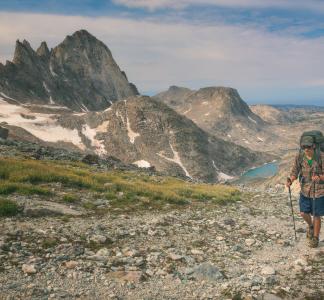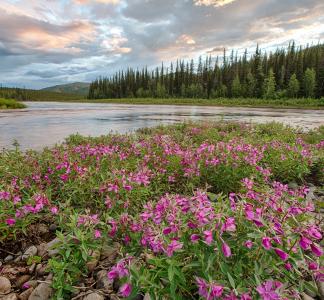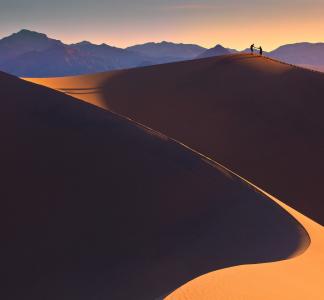Sean Bagshaw
Wildfires and invasive species jeopardize Owyhee Canyonlands
The sagebrush of Idaho’s Owyhee Canyonlands provides critical habitat for wildlife emblematic of the American West. Here you’ll find pronghorn and bighorn sheep meandering among the flora. Sage grouse dance in the high desert and the rare redband trout swim in desert streams. Hidden among the rolling sagebrush plateaus and deep, sheer-walled river canyons is the richest concentration of archaeological sites in Idaho.
Wildfires and exotic weed infestations exacerbated by climate change could destroy the native integrity of the Owyhee’s sagebrush lands. Through collaboration with ranchers, land managers, recreationists, and other partners, we are working to adapt and save this remote and wild landscape.
Owyhee Canyonlands is one of the most endangered landscapes in North America. Wildfires and invasive species could decimate this landscape unless we take proactive steps to protect it.
The threat
As one of the most imperiled landscapes in North America, the native sagebrush vegetation of the Owhyee Canyonlands continues to degrade. Climate change and previous poor management actions have led to dramatic increases in chronic wildfires that burn hundreds of thousands of acres, often followed by the invasion of exotic grasses and weeds that have little to no nutritional value to native wildlife.
In 2001 we joined a pioneering collaborative effort in Owyhee County, working with ranchers, outfitters, recreationists, Native Americans and other local residents to find solutions to simmering land management controversies. Years of community meetings and field trips led to the designation of over 500,000 acres of wilderness and 300 miles of wild and scenic rivers. We also secured an ongoing commitment to work together on problems facing the traditional ranching lifestyle and communities.
To preserve this wild and remote American West landscape, we must continue to team up with local partners and commit to forward-thinking action.
What we're doing
-
Collaborating with local partners
We collaborate with local ranchers and land managers to develop strategies to protect sagebrush lands from wildfire and exotic weed invasions.
-
Protecting wild places
We are working diligently to keep off-road vehicles in non-wilderness lands on designated routes.
-
Improving public safety
We are improving the public safety of roads that are key access points to wilderness and wild and scenic rivers.



